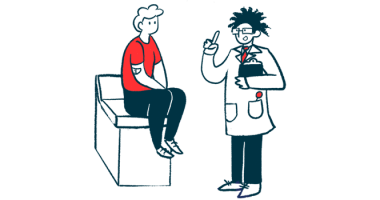Teen with Cushing’s syndrome also had atypical depression: Case report
17-year-old had major depression with acute psychotic episodes for 3 years

A 17-year old girl with Cushing’s syndrome developed atypical features of depression that were accompanied by suicide attempts and acute psychosis, both rarely reported in these patients.
According to the case study’s authors, people with Cushing’s syndrome often experience depression, but this can have a wide range of manifestations that may fall out of those commonly associated with depressive symptoms.
“The clinical presentation in this case highlighted the fact that there is a wide range of phenotypes [manifestations] of depression in [Cushing’s syndrome],” they wrote.
The report, “Case report: Treatment-resistant depression with acute psychosis in an adolescent girl with Cushing’s syndrome,” was published in the journal Frontiers in Psychiatry.
Cushing’s syndrome occurs when the adrenal glands sitting atop the kidneys produce too much cortisol, which can affect the body in a multitude of ways. Besides physical changes, people with Cushing’s syndrome often experience disease-related mood swings.
Depression common with Cushing’s syndrome patients
Depression is common among these patients, with previous studies reporting a prevalence varying from 50% to 81%. However, the manifestations of Cushing’s syndrome-related depression remain largely unknown.
Researchers in China described the case of a teenage girl with Cushing’s syndrome who developed hard-to-treat depression accompanied by acute psychotic episodes.
The girl, age 17 and with major depression for three years, was involuntarily hospitalized for severe depressed mood with suicide attempts and paranoid state. Despite the use of antidepressants, her depressed and irritable mood persisted over the past three years. In the two weeks preceding her hospitalization, her depression worsened and she made several suicide attempts.
At the time of admission, her vital signs were normal, but a physical evaluation revealed the presence of several features associated with Cushing’s, including central obesity, hairy face with acne, purple stretch marks on her abdomen, and bruises on her arms.
A mental state evaluation was impaired by her passivity and reluctance in answering questions. Venlafaxine, an antidepressant sold under the brand name Effexor, was used for more than three months, but with poor effects.
Her parents reported other symptoms including weight gain (25 kg, roughly 55 pounds), irregular menstrual cycles, and numbness of the hands and feet.
There were no cases of serious physical or psychiatric illness in her family. Before her symptoms started, she had a good social life and academic performance.
During a mental state evaluation, she showed marked cognitive impairment without loss of consciousness. She forgot important pieces of information easily and had no recollection of her suicide attempt. It was difficult for her to recall her medical history, a known feature of depressive patients. Also, she had problems focusing and keeping up with a conversation.
Despite her level of education, she had problems articulating her feelings. She kept her answers short or remained silent. She also experienced psychotic outbursts, along with depressive moods and negative thoughts, which included self blame, worthlessness, and hopelessness.
During most of her hospitalization, she was confused and apathetic, with intermittent anxiety. She walked or was alone for a long time, and spoke to other patients suddenly.
Lab tests showed her blood and urine cortisol levels were high. Moreover, her cortisol levels failed to drop after low-dose and high-dose dexamethasone suppression tests. In these tests, blood cortisol levels are measured in the morning after patients take a tablet of dexamethasone, a corticosteroid that normally blocks its production. They are used to confirm the presence of hypercortisolism (excessive cortisol levels) and pinpoint its source.
However, the levels of adrenocorticotropic hormone (ACTH), a hormone that stimulates the adrenal glands to produce cortisol, were not elevated.
Diagnosis of ACTH-independent Cushing’s syndrome
At this point, clinicians suspected adrenal ACTH-independent Cushing’s syndrome, which was confirmed when an abdominal CT scan showed a benign tumor — an adenoma — in her right adrenal gland.
The tumor was removed through a minimally invasive surgery, and she received a therapeutic cocktail that included hydrocortisone, medications to control blood pressure, as well as the antidepressant escitalopram (sold under the brand name Lexapro).
In the one-month follow-up visit after her discharge, her depressive symptoms had eased significantly and she had no self-harm behaviors or psychiatric symptoms. The patient was calm, but still reacted slowly and had impaired cognition.
“This case showed a more detailed profile of depression secondary to [Cushing’s syndrome] and highlighted the differences with major depression in clinical features,” the researchers wrote, adding that “it will improve insight into the differential diagnosis especially when the symptoms are not typical.”







